What are Traps in Plumbing?
A trap is a mechanism that prevents sewer gases from entering the structure. The traps hold a little water and are situated underneath or within a plumbing fixture. The holding water provides a water seal, which prevents foul gases from drain pipes from returning to the structure. As a result, traps are installed in all plumbing fixtures such as sinks, washbasins, bathtubs, and toilets.
Drain lines are designed to drain water from any water-using device or fixture in the home. It is connected to the main sewer system. As a result, there should be a trap in the pipe that can be used to seal the drain. A net is installed in the gully trap to keep debris out. The water seal’s height in the gully trap is 60 and 70 mm.
The plumbing traps are of high quality. A bent pipe is employed to create a water seal in any trap. You may have seen floor traps, alley traps, p-traps, and other design traps in your house plumbing fixtures.
Plumbing Trap Specifications:
- For adequate strengthening, the trap should be built of suitable material.
- The trap should be appropriately filled with water to prevent any gases from entering the house.
- The trap should be free of grooves and have a flat surface to allow water to drain quickly.
- The trap’s inside should be smooth to allow water to escape quickly.
- The water should be able to clear itself if the trap is of good quality.
- The trap should be simple to connect to the drain.
- A simple and cost-effective trap design is essential.
- A net is installed in the gully trap to keep debris out. The water seal’s height in the gully trap is 60 and 70 mm.
Different Types of Traps in Plumbing:
Traps are extensively used in plumbing and come in various shapes and sizes. These are the following:
1. Gully Trap:
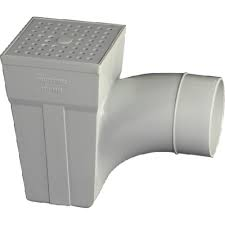
Fig 1: Gully Trap
Courtesy: supreme.co.in
These traps are built outside the building to carry wastewater discharge from washbasins, sinks, and bathrooms. They are connected to the nearest building drain/sewage to prevent filthy sewer gases from entering the residence. These are deep seal traps with a minimum water seal depth of 50 mm. It also stops cockroaches and other insects from entering waste pipes carrying wastewater from the sewage line.
2. Floor Trap:
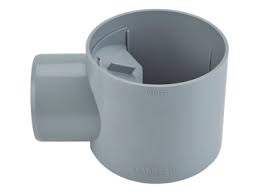
Fig 2: Floor Trap
Courtesy: ashirvad.com
Nahni Trap is another name for floor traps. Nahni Trap prevents filthy vapors from entering the structure by providing a water seal. A water seal with a depth of at least 50 mm should be provided. The floor trap prevents foul gases (terrible odors) from entering the structure if wastewater flows.
A floor trap, also known as a Nahni trap, is installed on the floor to collect wastewater from the bathroom, wash zone, washbowl, and kitchen sinks, among other places. Floor traps are available in PVC, UPVC, and CI; they do not have a vent pipe, but detachable grinding is visible at the highest position of the traps.
Because of dissipation, some plumbing trap kinds introduced in the regions may lose their water seal. A plan should be devised to re-establish the seal by supplying water regularly. It should be feasible by connecting the trap to a waste disposal system.
3. S Trap:
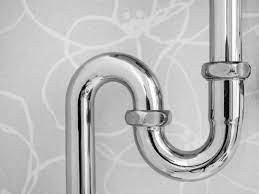
Fig 3: S Trap
Courtesy: waypointinspection.com
This plumbing trap resembles a P-shaped trap and is used to repair water closets in latrines. The only difference between the P trap and the S trap is that the P trap is used for outlets through the wall; the S-trap is used for outlets through the floor.
4. P Trap:
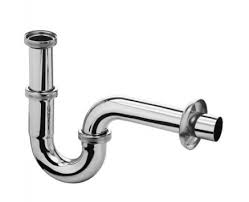
Fig 4: P Trap
Courtesy: aceplumbing.com
This trap is used in conjunction with an Indian toilet. UPVC or cast iron sheet is used to make the traps. This trap also features a water seal, which keeps foul gases out of the house.
5. Q Trap:
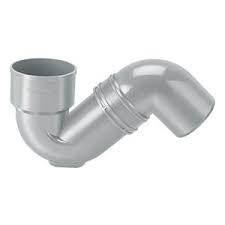
Fig 5: Q Trap
Courtesy: shakedeal.com
If you have a building with numerous floors and bathrooms, a Q-trap is appropriate for upper-level use. Except for the characteristic ” Q ” shape, they work almost identically to P-traps and S-traps. Apart from that, Q-traps are standard plumbing traps that use water and pipework to keep sewer odors at bay.
The Q-trap, like the P-trap, captures water in the “U” shaped region of its body, and they are effective. The choice between a Q-trap and a P-trap is largely based on the space available under the sink. You’ll never have to worry about your Q-trap drying out if you run the water consistently.
6. Intercepting Trap:
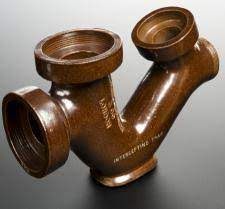
Fig 6: Intercepting Trap
Courtesy: triotech.wordpress.com
Intercepting traps are not required for homeowners, although they are popular in large buildings and intercepted sewer systems. They are efficient and capable of handling big amounts of wastewater from different plumbing applications throughout a large structure. Most office buildings and large corporations must intercept traps to fulfill their plumbing needs without allowing sewage odors to escape.
Because of their depth and strength, intercepting traps keep bugs and other pests at bay. Because they have so much duty, intercepting traps is more complicated than typical plumbing traps. In large buildings, intercepting traps can be found in the last main hole where the sewer system reaches the building.
7. Grease Trap.
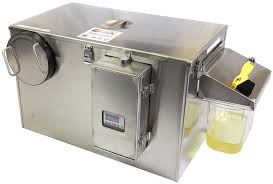
Fig 7: Grease Trap
Courtesy: acquacure.co.uk
Between a kitchen and the sewerage system, grease traps are the last line of defense. They work to prevent thick oil and solid pieces from entering a kitchen’s wastewater system and causing damage. Grease traps are used in all restaurants and fast food establishments.
Grease and solid waste generated during meal preparation are dense and unable to pass through a grease trap. It avoids hazardous clogs or grease leaks, which could result in costly repairs or replacements. On the other hand, a grease trap keeps the heavy oil at the top of the trap from becoming an issue.
8. Bottle Trap:
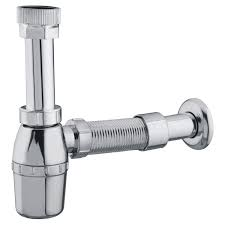
Fig 8: Bottle Trap
Courtesy: goekainindia.com
This type of trap has a wider diameter than the basin’s plumbing pipe. The trap is filled with fresh water when water is poured in. As a result, the trap is partially filled with water.
9. Drum Trap:
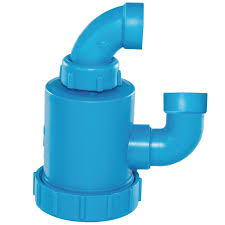
Fig 9: Drum Trap
Courtesy: watts.com
Drum traps, which look like metal drums, are an important feature of a house plumbing system because their big apertures make it easier to find and remove anything that needs to be retrieved or removed from the system. Their broad caps also make it simple to slip a plumbing snake into the trap to clear obstructions in your drain.
Water from a drainpipe enters the trap from the bottom and escapes at the top, leaving solid things behind in the trap. Because there is always water in the trap, sewer gases cannot flow into your home through it.
10. Running Trap:
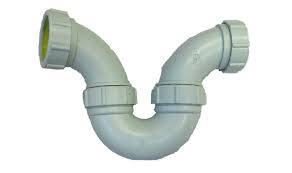
Fig 10: Running Trap
Courtesy: upgradehome.com
These are commonly found in public restrooms, where a single running trap is utilized to capture a variety of untrapped washbasins. It could be utilized in household installations where a P or S trap setup is not practical. Although specific traps are available for these appliances, running traps are sometimes utilized with a washing machine waste output or dishwasher.
11. Building Trap:
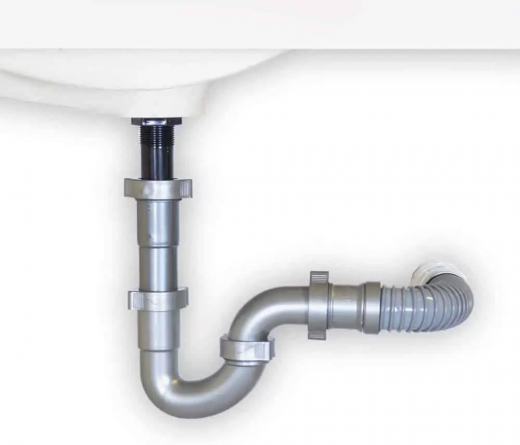
Fig 11: Building Trap
Courtesy: upgradehome.com
Building traps include a U-shaped trap in the center and a vent leading outdoors at the end, and they flow from a building’s drain to the sewer. It is necessary to vent a building trap to keep it sanitary and preserve the water seal. Building traps come in various shapes, but they’re usually a bigger, more stable version of an S-trap to handle the increased demand.
They are just as effective at repelling scents to keep unwanted bugs and vermin out of the house or structure. Building traps are used to prevent dangerous siphonage, which could result in poisonous gases exiting the drain. Failure to vent a building trap is a violation of US building codes.
12.Straight-Through Trap:
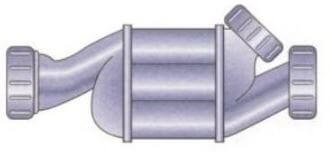
Fig 12: Straight-Through Trap
Courtesy: Civiljungle.com
This trap has a 1¼-inch inlet and output, and a cleaning eye is also included with this sort of trap. It features a water seal of 75 mm. Polypropylene is used to make this type of trap. These are employed instead when there isn’t enough room for a trap. They’re also more concealable under pedestal basins. An alternate valve works on the simple premise of a seal created by an interior membrane. When the water is released, the membrane permits water to flow through it before closing to prevent foul air entering the building.
13.Low-Level Bath Trap:
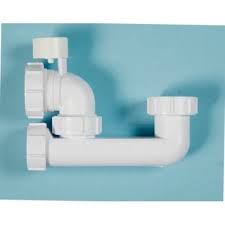
Fig 13: Low-Level Bath Trap
Courtesy: buildbase.cio.uk
Overflow access is provided by low-level bath traps, which is useful if you have a blockage. Low-level bath trap seals typically measure 38-40 millimeters and are easy to vent. Low-level bath traps may appear insignificant, but their seals are strong enough to keep sewage odors out.
Low-level bath traps are ideal for use beneath a bathtub or shower since they are narrow enough to fit into tight locations. A low-level bath trap may not be compatible with all vent stacks, but it is well worth it.
14. Bell Trap:
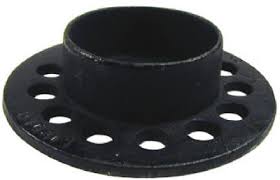
Fig 14: Bell Trap
Courtesy: idealtruevalue.com
The Bell Trap Drain is made for usage in the garage, on the patio, or outside. The water drains into a well in the drain unit, which acts as a sewer gas trap. The filter attaches to the drain body with a click—1 inch by two inches. The Bell Trap Drain is designed to fit over 1.
Conclusion:
These plumbing traps have a particular purpose, and not all of them will fit your building’s requirements. An S-trap or P-trap may suffice if you have enough space, but specialty variations such as bottle traps may be useful.
References:
1. Moid, E. (2021, July 23). What is Trap?? – Its 11 Types. Civil Click; www.civilclick.com. https://www.civilclick.com/what-is-trap/
2. Plumbing Trap | Drain Traps | Plumbing Traps | Drainage Trap | Drainage Traps | Drainage Traps Types – GharExpert.com. (n.d.). Plumbing Trap | Drain Traps | Plumbing Traps | Drainage Trap | Drainage Traps | Drainage Traps Types – GharExpert.Com; www.gharexpert.com. Retrieved April 10, 2022, from https://www.gharexpert.com/tips/articles/Construction/1790/Waste-Water-Drainage-1790-Traps–Types-Uses_0
3. Bhandakkar, K. (2021, January 27). Plumbing Trap | 14 Plumbing Trap Types | Types of Traps In Plumbing | Gully Trap | Types of Drain Traps | Different Types of Traps. Civiconcepts; civiconcepts.com. https://civiconcepts.com/blog/types-plumbing-trap
4. 15 Different Types of Traps In Plumbing | Upgraded Home. (2021, April 22). Upgraded Home; upgradedhome.com. https://upgradedhome.com/types-of-traps-in-plumbing/
5. What Are Traps in Plumbing? | Type of Trap in Plumbing. (2021, May 19). 9To5Civil; 9to5civil.com. https://9to5civil.com/plumbing-trap/
6. Admin. (2021, February 24). What are Traps | What Does Trap do. What Are Traps | What Does Trap Do; wrengineers.in. https://wrengineers.in/what-are-traps-what-does-trap-do/
7. Lead, C. (2021, July 25). Plumbing Trap – Purpose, 15 Types of Plumbing Traps – Civil Lead. Civil Lead; www.civillead.com. https://www.civillead.com/plumbing-trap-types-of-plumbing-traps/
If you have a query, you can ask a question here.



DEAR ;- SIR / MADM
Good afterr noon !
extermly helpfull portal ,
thanks
B.Thorat
H.O.D
CIVIL DIVI.,